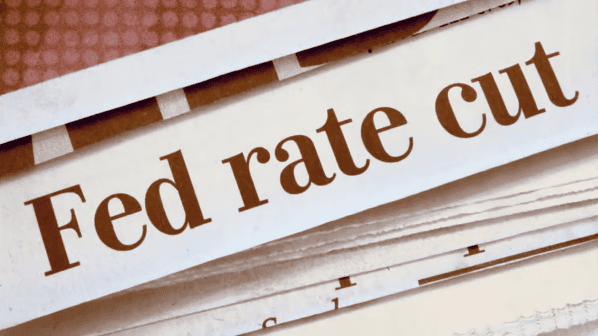Crypto News: Marketupdate September 2025
In September 2025, the U.S. economy and financial markets were characterized by conflicting signals: on one hand, the labor market showed signs of cooling and producer inflation weakened, while on the other hand, the economy grew stronger than expected in the second quarter. This mix of data presented the Federal Reserve with difficult decisions regarding monetary policy, while the markets reacted sharply to every new indicator.
September 5: Weak Job Growth in August Increases Chances of Fed Rate Cut
In August, U.S. employment grew by only 22,000 jobs, significantly below expectations. The unemployment rate rose to 4.3 percent, indicating a further cooling of the labor market. The industrial and government sectors lost jobs, while healthcare still saw some growth. The weak figures increase the likelihood that the Federal Reserve will cut interest rates later this month. Meanwhile, President Trump’s dismissal of the head of the Bureau of Labor Statistics has sparked debate over the independence of labor reports. (Source: CNBC)
September 10: Cooler U.S. Producer Prices Point to Weakening Demand
U.S. producer prices fell by 0.1 percent in August, while economists had expected an increase. The decline was mainly driven by lower trade margins and a slight cooling in the service sector. On an annual basis, prices rose by 2.6 percent, indicating easing inflationary pressure.
According to economists, this points to weakening domestic demand: many companies are absorbing higher import tariffs themselves instead of passing them on to consumers. The data reinforce expectations that the Federal Reserve will cut interest rates by 0.25 percentage points next week, while President Trump has called for a larger reduction. (Source: Reuters)
September 11: Rising Consumer Prices and Higher Unemployment Claims Strengthen Expectations of Rate Cut
U.S. consumer prices rose by 0.4 percent in August, bringing the annual inflation rate to 2.9 percent, the highest level since January. The increase was mainly driven by higher costs for housing, food, and energy. Core inflation, excluding food and energy, came in at 3.1 percent.
At the same time, weekly unemployment claims unexpectedly surged to 263,000, the highest level since 2021. The combination of rising prices and a cooling labor market presents a difficult dilemma for the Federal Reserve, which is set to make its interest rate decision next week. The market is almost certain that a rate cut will occur, potentially even larger than the usual 25 basis points. (Source: CNBC)
September 17: Fed Lowers Interest Rate and Forecasts Two Additional Cuts This Year
The Federal Reserve lowered its benchmark interest rate by 0.25 percentage points to a range of 4.00 to 4.25 percent. The decision, made with a strong 11-to-1 majority, reflects growing concerns about the cooling labor market, while inflation remains above the target.
In its statement, the Fed acknowledged that job growth has slowed and that employment prospects are weakening. At the same time, it indicated that two more rate cuts are expected before the end of the year, likely in October and December.
Fed Chair Jerome Powell described the rate cut as a form of “risk management” to protect the economy from further weakening. The markets had largely priced in this move already.
The rate cut comes amid political pressure from President Trump, who has repeatedly pushed for faster and larger reductions. However, Powell emphasized that there was no broad support within the committee for a half-percentage-point cut. (Source: CNBC)
September 25: U.S. Economy Grows in Second Quarter at Fastest Pace in Nearly Two Years
The U.S. economy grew at an annual rate of 3.8 percent in the second quarter, faster than previously estimated and the highest growth rate since 2023. The increase was mainly driven by strong consumer spending and higher business investment, particularly in technology and artificial intelligence.
A narrower trade deficit also contributed to growth as imports fell sharply following earlier tariff increases. At the same time, applications for unemployment benefits dropped by 14,000 to 218,000, indicating a resilient labor market. Economists, however, warn that growth is likely to slow in the second half of the year due to ongoing trade tensions, immigration restrictions, and pressure on corporate profits. Despite the strong figures, analysts do not expect the Federal Reserve to reverse its recent rate cut. (Source: Reuters)
September 26: Fed’s Core Inflation Remains Stable at 2.9 Percent in August
Core inflation in the U.S. remained at 2.9 percent year-on-year in August, as expected, with a monthly increase of 0.2 percent. Overall inflation came in at 2.7 percent. Personal income rose 0.4 percent, and consumption increased by 0.6 percent, both slightly above expectations. The data suggest that the Fed is likely to follow through on its previously announced two 0.25 percentage point rate cuts this year. Despite President Trump’s tariffs, companies have largely absorbed price increases, while consumers continue to spend robustly. The personal savings rate rose slightly to 4.6 percent, indicating that consumers are still saving a portion of their income despite inflation. (Source: CNBC)
Conclusion:
Despite weak job growth and moderate inflation, the U.S. economy remains resilient, driven by consumer spending and business investment. The Fed responded with an interest rate cut and anticipates two more cuts this year, while core inflation remains stable and consumers continue to spend and save at a relatively strong pace. However, the coming months remain uncertain, with risks from trade tensions, policy pressures, and potential slowing in economic growth.



